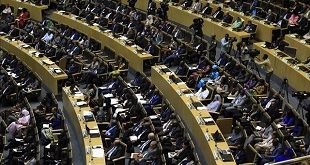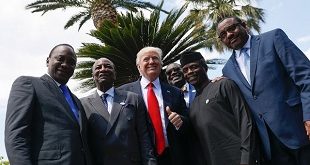Food aid is only a temporary stop gap
Some African countries are distributing food aid as a stopgap. Rwanda was one of the first. Uganda has followed, undertaking food distributions for 1.5 million vulnerable residents of Greater Kampala.
Distributing food aid may be complicated by the fact that it is not always clear who should be targeted. In many developing countries, vulnerability, poverty and hunger exist across the entire population. But during a crisis like COVID-19, people who rely on the market rather than growing their own food will be the most heavily affected. This is why both Rwanda and Uganda decided initially to target urban populations.
Even within cities, understanding who to target is difficult.
In more developed countries, comprehensive tax and employment registers make it easier to identify vulnerable populations. Without comprehensive registers, it may be logistically easier to get people to come to a central area to receive food if they need it. But not only does this undermine social distancing, having large numbers of desperate people in one place can bring about chaos.
Food aid may prove unsustainable. It’s not yet clear how long lockdowns will need to last to flatten the curve sufficiently. And an effective vaccine is at least 18 months away. Yet the longer the lockdowns last, the more people may be pushed into poverty. More people will need food aid and for longer. Many African governments are already cash strapped and so free food distribution cannot be a long term strategy.
That’s why ensuring stable access to affordable food is key.
Managing informal markets
Many African cities are sprawling due to their largely unplanned growth. As people flock to cities, they tend to live first on the outskirts where it is more affordable. Markets and individual vendors set up there to serve the informal settlements. These are important sources of food security for urban households. Because they are close to where people live, they enable daily purchases, particularly of fresh produce. Informal sector operators survive from income earned daily.
This decentralised food vending is often less tolerated by governments. But it may actually prove to be an advantage. It means people don’t need to go far from home for food. It also may be easier to prevent crowds of people forming and more feasible than enforcing strict distancing measures in market spaces. What’s more, these informal vendors, many of whom are women, are often the most economically vulnerable, so they need to be able to continue to sell.
Where there are larger markets, measures that allow them to operate safely will be key. This is for non-food items too, to allow people to generate income to purchase food. Measures will need to include effective sanitation and hand-washing stations. Targeting individual behaviour may also be highly effective.
Many of these markets already tend to be more organised, so it may be easier to work with them to implement measures. For example, vendors could work in rotation to decongest markets on any one day. This has already been done with some success in some places in India.
To avoid a hunger crisis, governments must think of sustainable solutions to keep food supply chains working. The COVID-19 crisis may last for many more months.
****
Astrid R.N. Haas is Policy Director, International Growth Centre
Source: the conversation
CLICK TO READ ONLINE MAGAZINE HERE
 The Independent Uganda: You get the Truth we Pay the Price
The Independent Uganda: You get the Truth we Pay the Price


